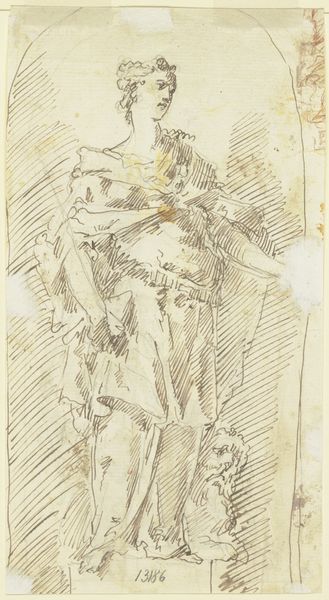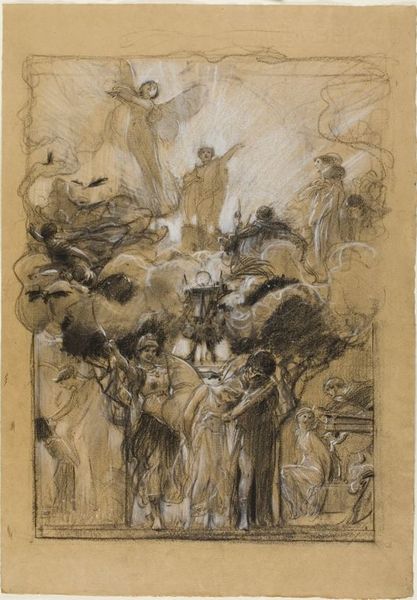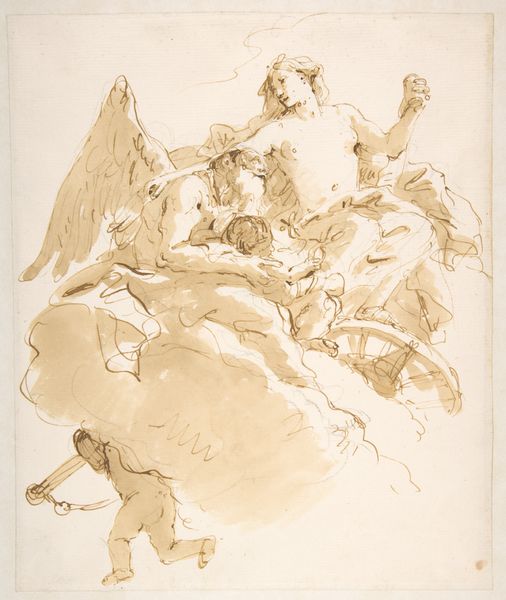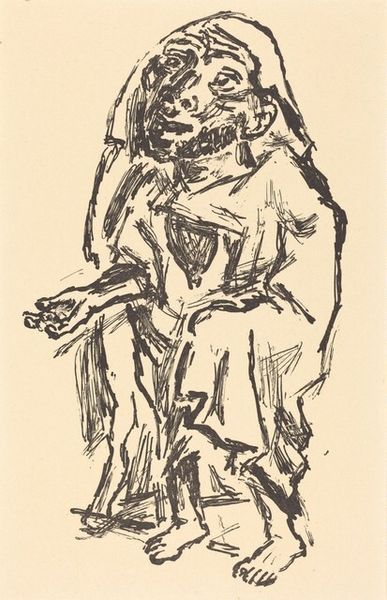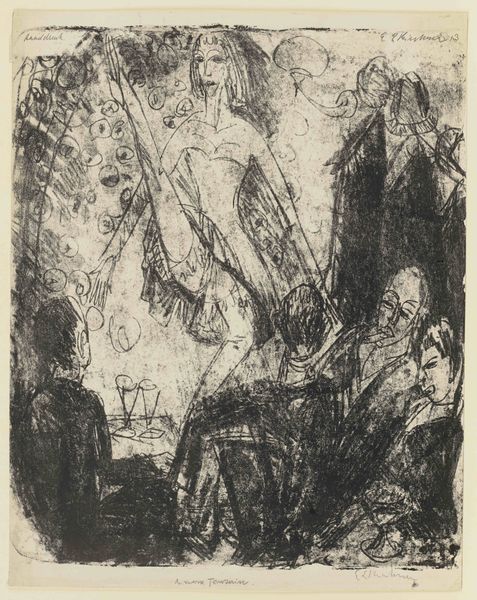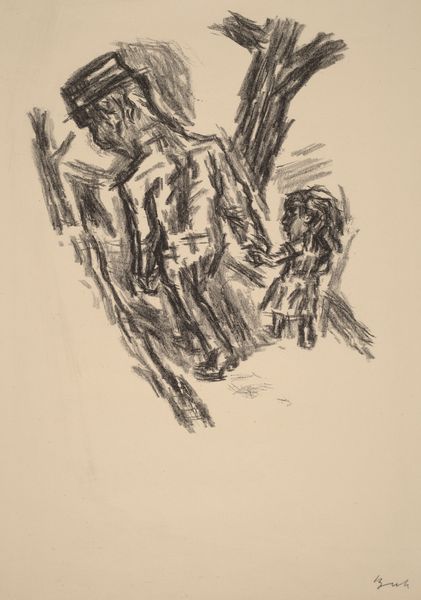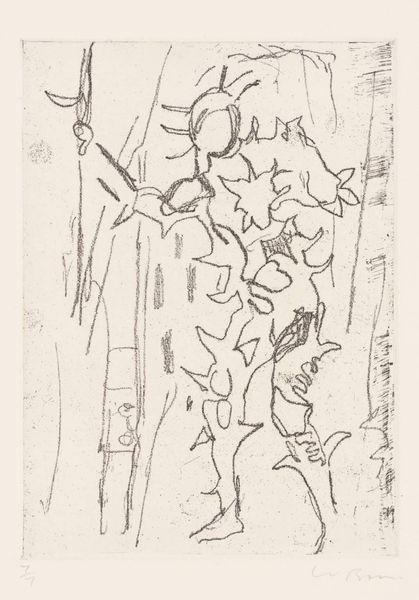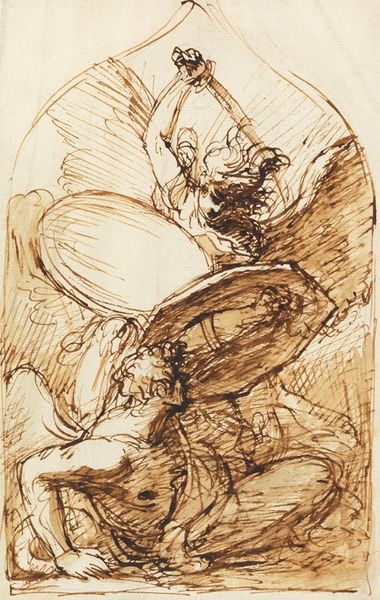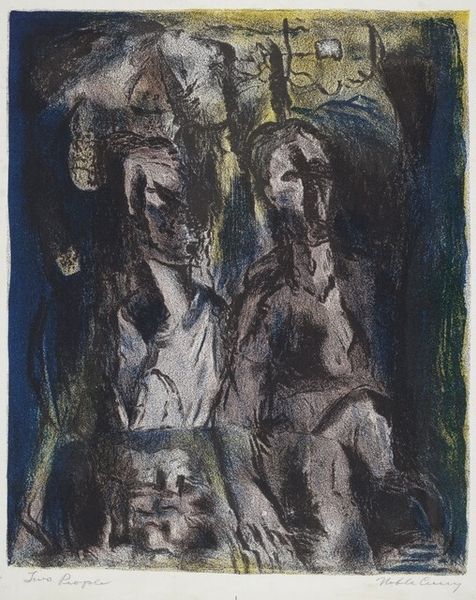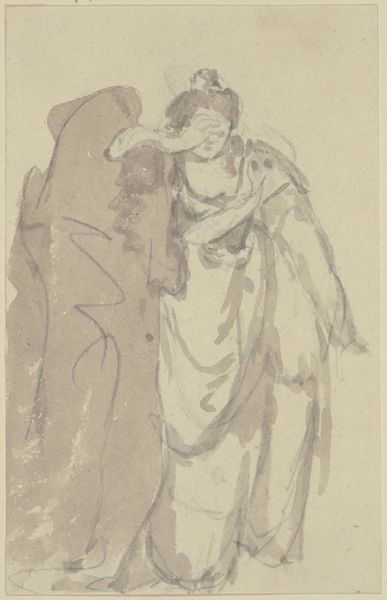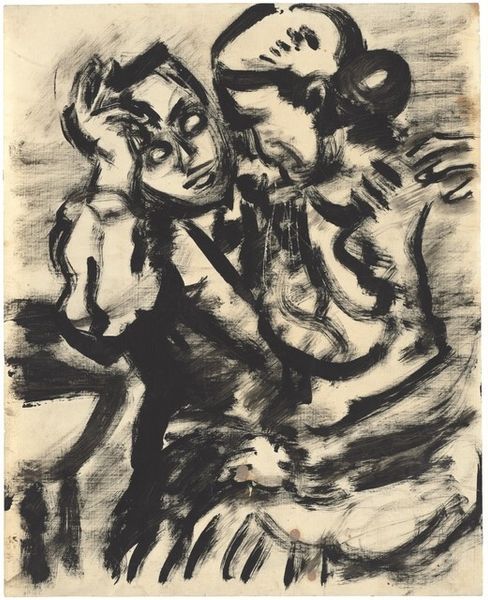
drawing, ink, pencil, pen
#
drawing
#
ink drawing
#
pen sketch
#
pencil sketch
#
german-expressionism
#
fantasy-art
#
figuration
#
ink
#
pencil drawing
#
ink drawing experimentation
#
pen-ink sketch
#
pencil
#
pen
#
grotesque
Dimensions: 11 1/8 x 8 1/4 in. (28.26 x 20.96 cm) (image)
Copyright: No Copyright - United States
Editor: Here we have Jules Chadel's "Temptation of St. Anthony," created sometime between 1900 and 1942, rendered in ink and pencil. It has this swirling, almost nightmarish quality. What historical tensions or societal anxieties do you think might be at play here? Curator: This work powerfully embodies the German Expressionist movement, a period rife with social upheaval and anxieties surrounding modernization, industrialization, and the rise of nationalism. The grotesque figures and distorted forms you observe are characteristic of Expressionism's rejection of traditional artistic values, using instead exaggerated emotions and symbolism to reflect inner turmoil. Think about it, St. Anthony’s trials represent broader struggles against societal pressures, moral decay, and the seductive power of destructive ideologies. How might Chadel be using St. Anthony to critique the emerging social order of his time? Editor: So, it’s less about a literal religious narrative, and more about societal struggles projected onto this biblical figure? I suppose that makes sense. Curator: Exactly. Consider also the perspective from feminist theory: the grotesque figures tempting St. Anthony can be analyzed as embodiments of societal anxieties around female sexuality and the perceived threat to traditional patriarchal structures. Does that shift your interpretation at all? Editor: It does, definitely. Seeing these figures not just as demons, but as symbols of suppressed desires and fears about social change…it really reframes the whole thing. I had initially missed this and it opens up so many questions for me about power and control. Curator: Absolutely, and those are exactly the questions we should be asking when we engage with a piece like this. It challenges us to consider whose stories are being told and whose voices are being silenced. Editor: This was really eye-opening. I am walking away with a much deeper appreciation for how historical context shapes our understanding of art. Curator: And for the power of art to reflect and challenge the society that creates it. I have also gained something through your insight and perspectives. Thank you!
Comments
No comments
Be the first to comment and join the conversation on the ultimate creative platform.
